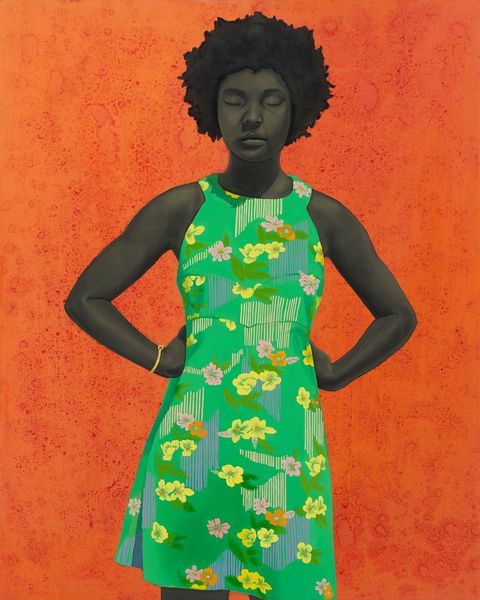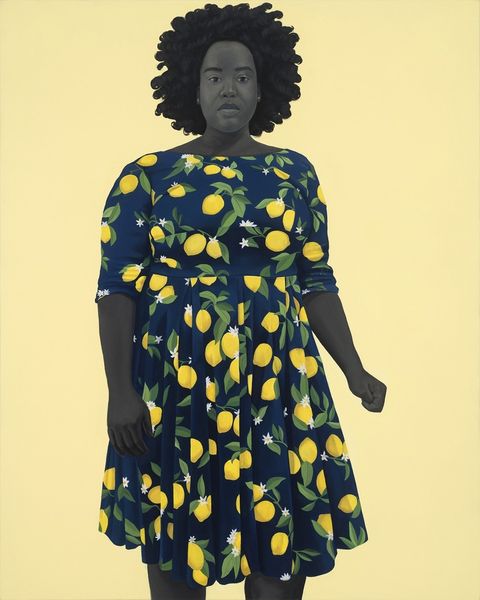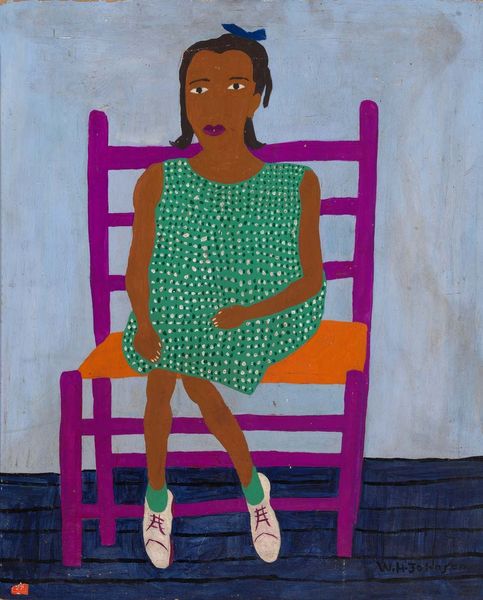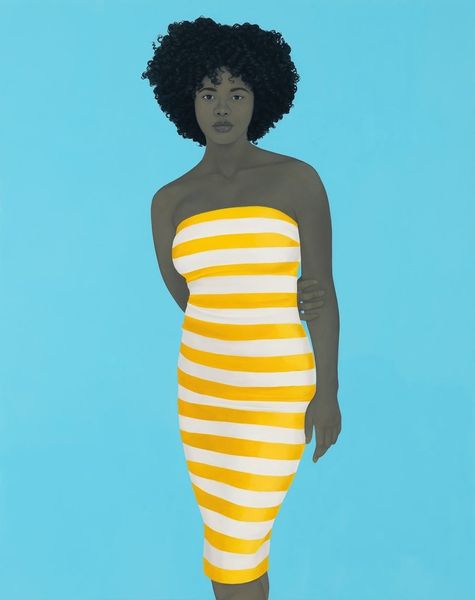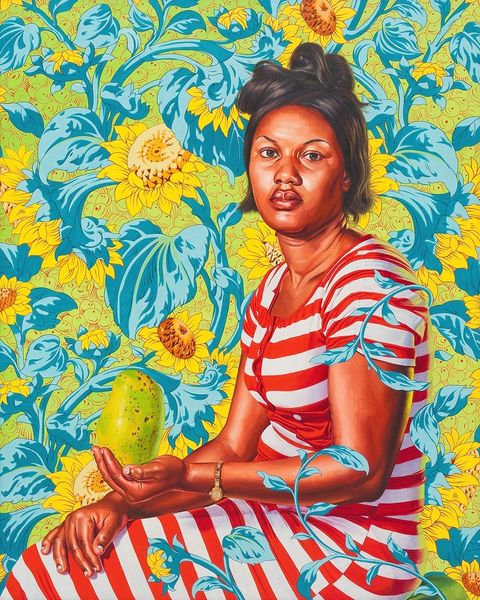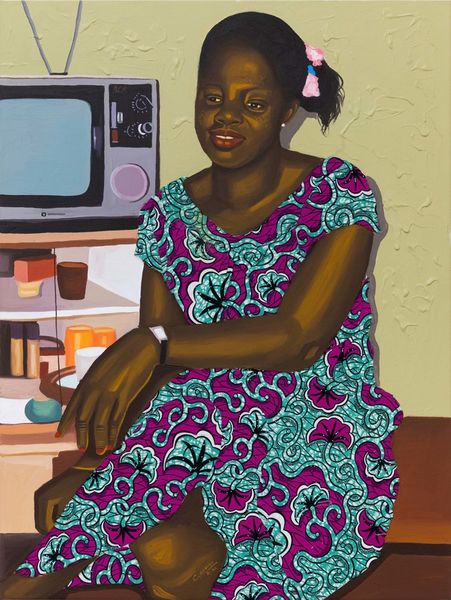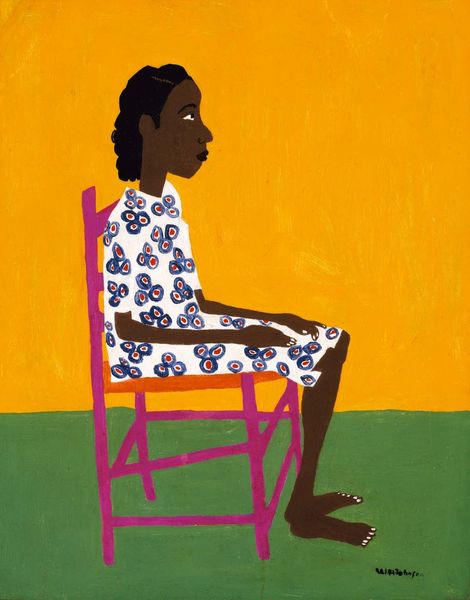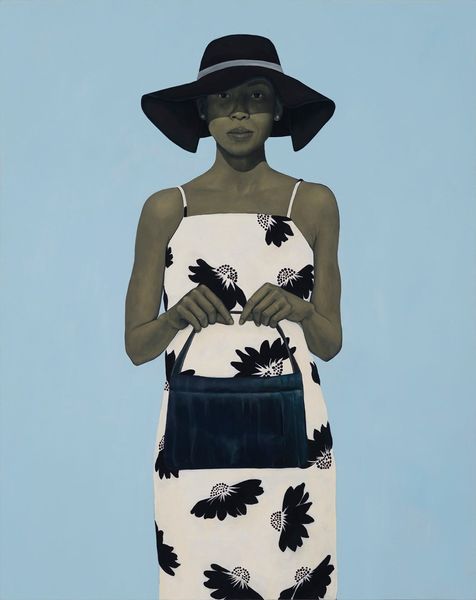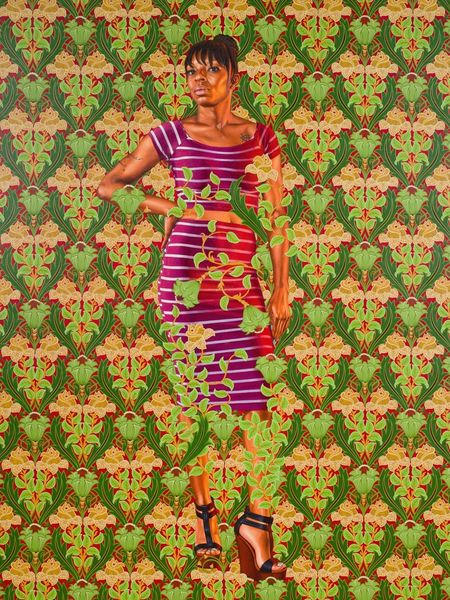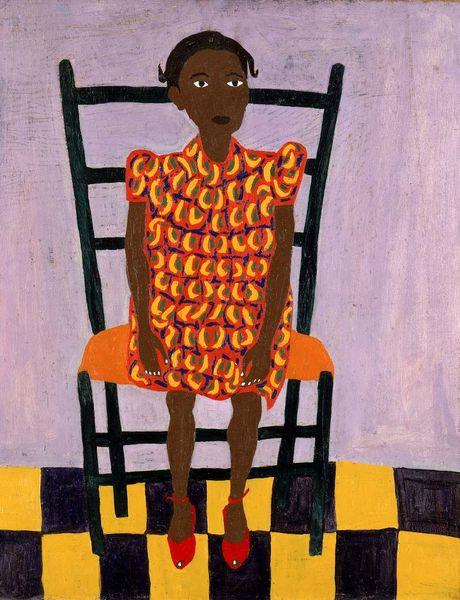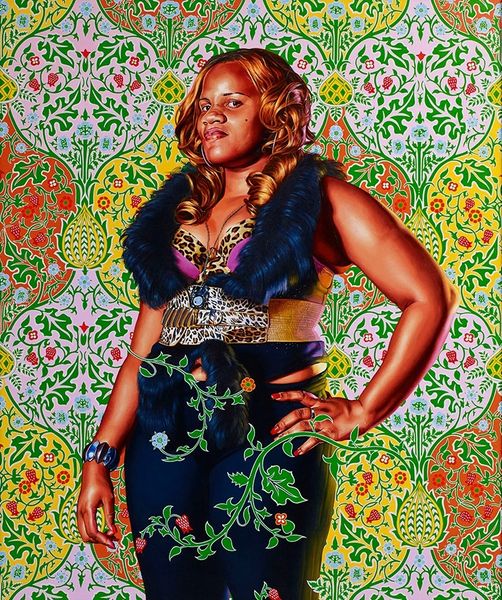
Copyright: Modern Artists: Artvee
Curator: Amy Sherald painted "They Call Me Redbone but I’d Rather Be Strawberry Shortcake" in 2009, using acrylic on canvas. It’s part of a series where Sherald portrays Black Americans in moments of quiet contemplation, challenging historical representations. Editor: My first thought is, "What an interesting use of color." That vibrant yellow dress and pink backdrop pop so vividly, yet her gray-scale skin-tone creates a peculiar detachment, a sense of material being absent or removed. Curator: The grayscale, that is, Sherald's distinctive style. It pulls directly from the historical erasure of Black bodies and culture. It pushes viewers to see beyond race, demanding recognition of the individual, yet it acknowledges race at the same time, engaging with ongoing conversations about identity politics, visibility, and representation within contemporary art. Editor: And that striking, bold color scheme of pink, yellow, and the almost hyper-realist rendering of the strawberries—they’re manufactured and yet grounded in very earthly labor, farming, and textile industries. How do these choices intersect with our understanding of the artwork's purpose? What specific commentary is offered? Curator: Consider the title: it critiques limiting definitions imposed upon Black women. "Redbone," often loaded with stereotypes, is contrasted with "Strawberry Shortcake," invoking sweetness and childhood innocence. These symbols complicate traditional and even current-day constructions of Black identity and hyper-visibility within broader pop-cultural and sociopolitical arenas. Editor: Right, I’m drawn to thinking about the mass production of Strawberry Shortcake as a media franchise and the idea of "cuteness" in consumer culture. Sherald highlights both material realities and cultural expectations that come into play within representation. It's such a sophisticated yet playful piece. Curator: Agreed. Sherald provides space for recognizing nuance within Black female identity while revealing the impact of both external perceptions and historical imprints. Her figures inhabit a space between reality and constructed image, fostering empathy and dialogue. Editor: For me, viewing this, it is difficult not to be mindful of what we consider "kitsch," yet there's something radical in that direct use of these kinds of readily available materials to force dialogues around both history and production. Curator: Precisely, this piece opens an aperture onto thinking critically about what images are consumed, who benefits, and what truths are obscured, generation after generation.
Comments
No comments
Be the first to comment and join the conversation on the ultimate creative platform.
